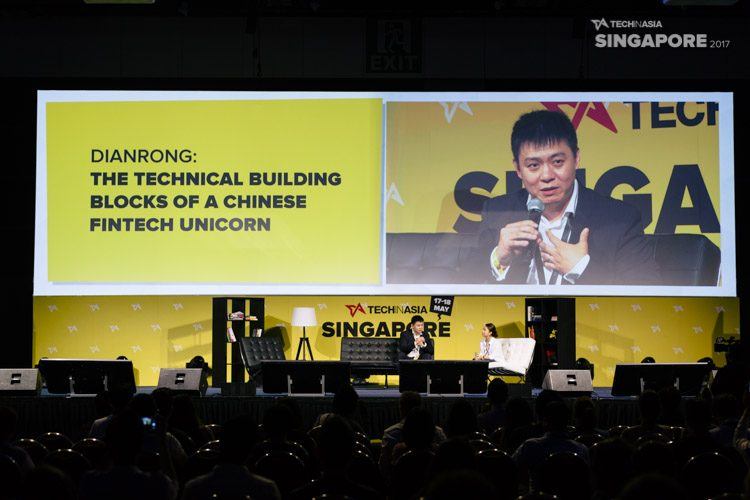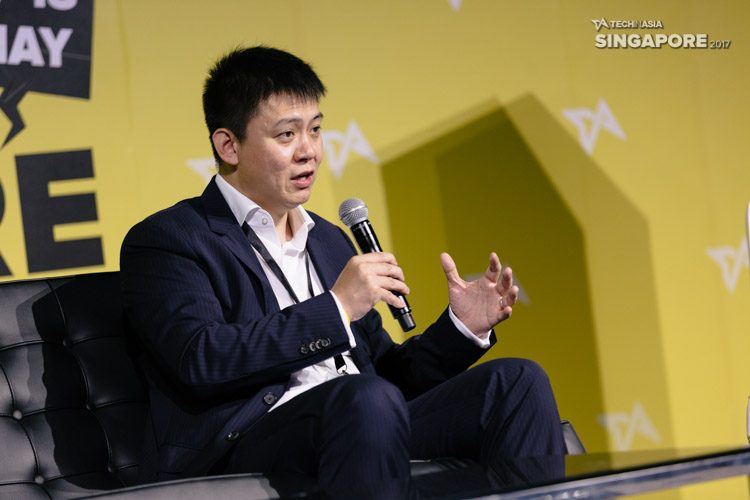
Photo credit: Pixabay.
A few years ago, China’s P2P lending industry was on fire, and not in a good way. A massive explosion of peer-to-peer lending startups was interrupted when a high-profile fraud case brought down one of the market leaders and severely damaged consumer trust in the core concept of people lending cash to total strangers. In the months that followed, things got rough, and the industry went into a slide.
One of the few firms that emerged relatively unscathed was Dianrong. Despite the downturn, it is now one of 15 fintech unicorns in China. It processes US$300 million to US$450 million in loan originations each month, and adds a million new customers each month. Onstage at Tech in Asia Singapore 2017, CTO Ling Kong shared the secret of how Dianrong’s tech was able to get the company to that level: Legos.
Ling’s Lego analogy (spoiler alert: Dianrong isn’t built with literal Lego blocks) actually dates back to before the founding of Dianrong. On a trip to the United States, Ling was deeply impressed by the country’s infrastructure. Compared to relatively undeveloped China, Ling said, the US looked “like The Jetsons.” It was an early lesson in the importance of infrastructure, and one that Ling would later apply to software development at Dianrong.
Dianrong’s tech philosophy

Photo credit: Tech in Asia.
Providing P2P lending services to a market as massive as China’s presents tremendously difficult technical challenges. While folks on the business side were struggling with things like convincing consumers and partners to trust in the concept, Ling and his team were working to build a system that – as of today – processes as many as 40 billion transactions per day (since a single loan origination may involve many individual investors).
Faced with that kind of challenge, some companies might be tempted to outsource, but Ling felt that wasn’t an option for Dianrong. “Tech is your advantage,” he said, “so as soon as you outsource it, they’re going to try to figure it out and sell it to your competitors.” Instead of outsourcing, Dianrong hired a big internal team, with a focus on talent above all else. They even hired a 16-year-old with no high school diploma, Ling said, because he had successfully hacked the company (and suitably impressed Ling in the process).
Recognizing that a lending startup in China’s fast-moving market needed solid bedrock infrastructure to ensure agile product development, Ling and his team developed Dianrong’s core software into what Ling describes as a series of Lego blocks. Each block handles a specific function, and by mixing and matching blocks, the company’s engineers can very quickly leverage their existing infrastructure to create new products.
For example, Ling said, a recent Dianrong AI risk modeling product went “from inception to app store release in only one month” and was built by just 11 people. A competitor or startup without Dianrong’s tech infrastructure – the Legos – would need 200 people to do the same job, Ling said. “The speed of innovation and how fast we can to respond the market [is] how we defend against incoming startups who want to take our space.”

Photo credit: Tech in Asia.
Of course, not every engineer wants to work on a Lego assembly line. In hiring, Ling discovered that Chinese engineers can be split into two basic groups: the hardcore coders who write software because they love it, and the more pragmatic programmers who got into software engineering because they were looking for a promising, stable career. Recognizing that natural divide, Ling split them up. Hardcore coders work on building the “Lego” pieces, more business-oriented engineers combine those pieces to create new products.
Ling said that the inspiration for this organization comes from a rather surprising source: the US military. As Dianrong grew beyond 250 employees, Ling “had a lot of management problems.” To him, the US military was a good model for a large organization that’s able to act effectively thanks to regimentation, specialization, and coordinated support. At Dianrong, Ling sees his product coders as Navy-SEAL-style strike teams that work in small teams to very quickly iterate and release products. The “Lego”-building hardcore coders provide the infrastructure support that equips and facilitates work for the product strike teams.
Fighting the good fight
The military analogy may sound extreme, but it reflects how seriously Ling takes his job, and Dianrong’s. Before P2P lending, he pointed out, loan seekers in China were forced to contend with “relatively lazy” big banks who didn’t want to entertain small loans or innovative ideas, or take their chances with predatory shadow bankers and loan sharks whose interest rates could run as high as 70 percent and whose businesses were “sometimes driven by knives and daggers.”
Dianrong, Ling said, is the solution, bringing trust and transparency to a massive lending market that was sorely lacking for both. So, although Dianrong is a financial tech company, Ling said that for him, it’s not really about the money. “I hope Dianrong isn’t a company that just cares about an IPO,” he said. “I hope we’re a company, or a set of passionate engineers, that wants to really change the world. And being in China and being at the forefront of a technology revolution in finance, we can actually see that we have this ability.”
This is part of the coverage of TIA Singapore 2017, our conference taking place on May 17 and 18.
This post A Chinese fintech unicorn’s secret to tech success? Legos. appeared first on Tech in Asia.
from Tech in Asia https://www.techinasia.com/dianrong-technical-building-blocks-chinese-fintech-unicorn
via IFTTT
No comments:
Post a Comment